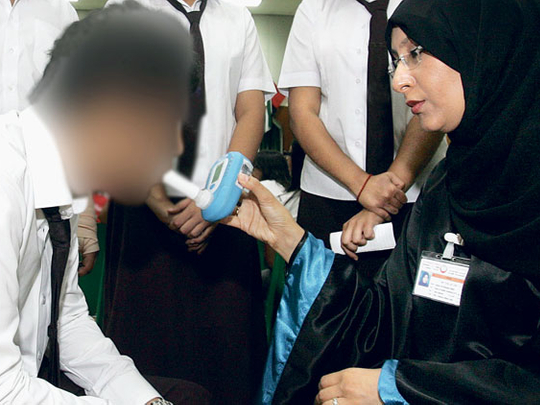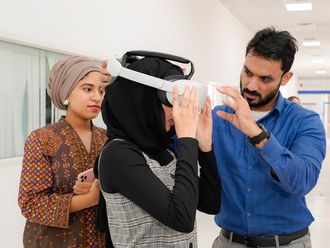
Dubai: It might come as a shock to parents and authorities but a survey shows that 14.6 per cent of students in Dubai schools consume tobacco products, XPRESS can reveal.
Interactive: The smoker's body
Preliminary findings of the survey, conducted by the Dubai Health Authority (DHA), showed that 71 per cent of these students were cigarettes smokers, while 10.9 per cent used the shisha, 9.2 per cent the pipe, 1.9 per cent used the cigar and 1.1 per cent chewed tobacco.
The survey, a copy of which is with XPRESS, was conducted under the Tobacco Free Dubai (TFD) campaign between October 2009 and April 2010. It covered a total of 2,457 students. Aged between 11-19 , they were drawn from Classes VII-XII across 32 schools, including 21 private schools, in Dubai.
The survey cited several reasons as to why these children took to smoking: to get a feel of the experience, overcome ‘stress' or imitate others, especially if one of the parents was a smoker or just out of curiosity.
Dr Hanan Ali Mubarak Obaid, TFD Project Leader and Head of the Nad Al Sheba Health Centre, said, "It is very essential for parents to monitor their children's activities. Checking tobacco use is not just the task of the health authorities but also of parents."
She said many of the students who were found to be smokers were being counselled at the smoking cessation clinic at Al Twar. The TFD team was willing to counsel students at schools, provided families of these children gave their consent, she added.
She said smokerlyser tests were conducted during the survey to detect the level of carbon monoxide in the breath of the students. A few cases showed the levels were at No 3, considered a "danger zone" for non-smokers, she said, adding it also indicated low frequency smoking with addiction to nicotine already occurring or on the verge of taking place.
She said students were also asked to fill in pre-test and post-test questionnaires, with a presentation on the harmful effects of smoking made in between the two sessions. The aim was to assess their "knowledge, attitude and practice" towards smoking before and after awareness was created.
She said the TFD campaign, aimed at creating awareness on the harmful effects of smoking, was carried out in different phases to cover different sections of the population.
One of the phases targeted females in various women's associations and colleges, offering counselling services. In another phase, the campaign targeted employees in different organisations and covered 40 mosques in Deira and Bur Dubai, she said.
Dr Hanan said the PHCs [Primary Healthcare Centres] have updated their guidelines on tobacco management and developed clinic assessment formats. Smoking cessation packages were introduced and cessation clinics launched during the year, she said.












